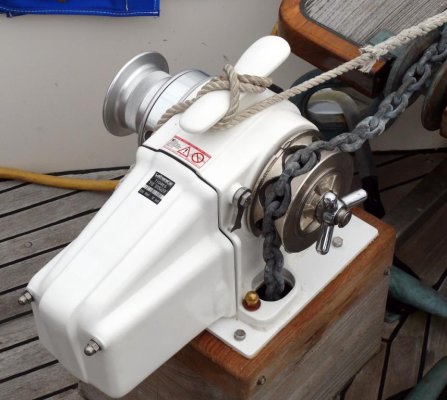Chris Foster
Senior Member
OK, here's a really embarassing question to have to ask.* I haven't been able to find anything in Chapmans, on line, or elsewhere.
Boats that I've chartered or crewed on in the past either had no windlass or a bidirectional windlass.* In both cases, I could pretty much figure out how to get the anchor out & down.
But the McMurray on my Rawson has one button only - up.
I note that there's a wheel on the outside of the gypsy, and friction plates on both sides of the gypsy.* So I'm guessing that the gypsy can freewheel by backing off on the wheel.* I played with it for a few minutes and currently I can back off the wheel, but the gypsy and the shaft appear to be as one - I'm thinking that a little penetrant and friendly persuasion would likely fix that.
So - before doing something that I might regret - is it safe to assume that I can back off the wheel a bit, get the anchor away, and use the gypsy and a little friction to give a controlled decent?*
Also - this is the first boat I've run with an all-chain rode.* Anything that I should know about that before I goof something up?
Thanks...
Boats that I've chartered or crewed on in the past either had no windlass or a bidirectional windlass.* In both cases, I could pretty much figure out how to get the anchor out & down.
But the McMurray on my Rawson has one button only - up.
I note that there's a wheel on the outside of the gypsy, and friction plates on both sides of the gypsy.* So I'm guessing that the gypsy can freewheel by backing off on the wheel.* I played with it for a few minutes and currently I can back off the wheel, but the gypsy and the shaft appear to be as one - I'm thinking that a little penetrant and friendly persuasion would likely fix that.
So - before doing something that I might regret - is it safe to assume that I can back off the wheel a bit, get the anchor away, and use the gypsy and a little friction to give a controlled decent?*
Also - this is the first boat I've run with an all-chain rode.* Anything that I should know about that before I goof something up?
Thanks...


